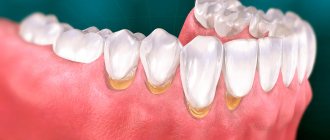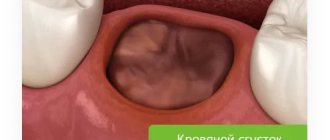Remove the tooth? Does it hurt to have teeth removed? Is it possible not to remove a wisdom tooth? These questions are probably among the top most popular among dentists. Perhaps each of us, at different stages of our lives, has been faced with the task of tooth extraction. There may be many reasons for this, which are usually divided into two groups: tooth extraction due to a certain disease and so-called planned tooth extraction.
Tooth extraction
Of course, removing a tooth is a last resort measure that the doctor takes if there are no other solutions. In case of emergency intervention, the prerequisite may be acute inflammation and toothache. In this case, tooth extraction is used to prevent complications associated with diseases such as caries, periostitis, osteomyelitis, periodontitis, periodontal disease and many others.
It is important to understand that everything is individual and the decision depends on the specific case and stage of the disease. There are also cases when a tooth needs to be removed for the purpose of orthodontic and orthopedic treatment.
Indications and contraindications for molar tooth extraction
Reasons for removing a molar tooth may be:
- purulent periostitis;
- abscess;
- phlegmon;
- large tumor in the tooth area;
- purulent periodontal disease;
- the presence of a cyst in the area of the diseased tooth;
- exposed pulp;
- longitudinal tooth fracture;
- critical tooth decay;
- critical tooth curvature;
- disease of the dental bone tissue;
- sinusitis.
The following reasons are contraindications to the removal of molars:
- acute heart diseases;
- acute viral diseases;
- flu;
- angina;
- renal failure;
- pancreatitis;
- hepatitis;
- acute diseases of the nervous system;
- oncological diseases
- initial and final stages of pregnancy;
- stomatitis;
- gingivitis
- general degeneration of the body;
- alcohol poisoning.
Content:
- Options for local anesthesia of a diseased tooth 1.1. Application 1.2. Infiltration 1.3. Conductor 1.4. Intraosseous 1.5. Intraligamentary
- Contraindications
- Pros and cons of local anesthesia in dentistry
To ensure that tooth extraction takes place with maximum comfort for the patient and is not associated with pain, dentists use special painkillers.
If the case is very complex and local anesthetics do not cope, anesthesia is used. Painkillers used in dentistry block the transmission of nerve impulses from the torn unit to the brain. Due to this, all manipulations carried out by a specialist are calmly perceived by a person.
Molar removal technology
Before proceeding with the removal of a molar, the doctor must make sure that there is no curvature of the roots. For this, an x-ray is taken. If the roots are not bent, the patient is given an anesthetic injection. After 10 minutes, the tooth can be removed.
First, the dentist carefully separates the gum from the body of the tooth. Then he grabs the tooth with pliers and begins to swing it and rotate it at the same time. After several such manipulations, the doctor pulls the tooth out of the alveoli.
In this sequence, both the upper and lower root teeth are removed. However, it is somewhat more difficult to grasp the upper molars with forceps.
Sometimes, when removing a molar, the doctor must first cut it into two or three parts and then pull out each part separately. This usually happens when the roots are bent.
In case of severe curvature of the roots, when they intertwine with the roots of neighboring teeth, removal must be done in fragments and under general anesthesia. In this case, the doctor completely exposes the gum around the diseased tooth.
If there is a cyst in the area of a diseased molar, the doctor is required to be highly qualified. This removal is done under both local and general anesthesia.
Two days after the removal of a molar, the patient must visit the dentist again to take an x-ray. This is necessary to ensure that all tooth roots have been removed.
What does the sensation of pain depend on?
How painful it is to pull teeth, according to research, depends on several factors. In the same patient, the intensity of pain during extraction may vary depending on the following signs:
- a molar or baby tooth needs to be pulled out - removal of a baby molar is almost painless, since it does not have powerful long roots, like those of a permanent one;
- location on the jaw arch - frontal molars are removed with a feeling of much less intense pain, since they are smaller in size, their root system is not as developed as that of the lateral teeth. The same can be said about trauma to the surrounding soft tissues - they suffer less, especially in comparison with wisdom tooth extraction;
- tooth shape and number of roots - by nature, human molars can have 1-2 or 3-4 branches of a stabilizing root system. So, tooth extraction will be more uncomfortable the more root branches the molar has.
It is necessary to clarify that whether it is painful to pull out a tooth depends not only on the listed factors, but also on the perception of the procedure by the person himself. If you experience a feeling of panic and intense fear before the extraction, this psychological state can directly affect the procedure and actually provoke intense pain. There are many stories among patients not only about how much pain is felt during extraction, but also that there is a big difference whether a molar is removed from above or below, supposedly this affects the intensity of the discomfort.
We need to figure out whether these rumors have a scientific basis. Dentists claim that, regardless of the location of the tooth, it can be removed completely painlessly if high-quality anesthesia is administered, but the jaw may begin to hurt after the end of the freezing period. The severity of the pain syndrome will depend on several points:
- how much bone and soft tissue was destroyed;
- is there an acute inflammatory process at the time of removal;
- a frontal or lateral tooth is subjected to extraction;
- the lower or upper molar is removed;
- whether there is an accumulation of pus in the area of the unit being removed.
The fact that lower units are more difficult to remove from the bed is also due to the density of the bone tissue. All these factors directly affect the degree of destruction and recovery time after the molar has been removed. Therefore, it makes no sense to say that it is painful to remove the lower teeth, but not the upper ones; the location will only affect the adaptation period after extraction.
Is it painful to remove molars?
Today, only older people remember the terrible pain during the removal of molars. Nowadays, the quality of painkillers is so high that the patient does not feel pain at all, even with difficult removal. At the same time, after the anesthesia wears off, pain, of course, occurs, but it is quite tolerable and depends on how much the gum under the tooth was disturbed.
If the pain is still severe, then the dentist recommends taking a painkiller tablet. The same analgin successfully dulls pain for a long time.
In rare cases, the patient may experience throbbing and increasing pain. This annoying phenomenon occurs due to inflammation of the socket. If measures are not taken quickly, the tissue begins to fester in the hole. This process can be suppressed with drug treatment, but sometimes you have to open the gum and clean the hole from pus.
Will the site of the extracted tooth stop hurting on the second day?
Patients often believe that the pain at the site of pulled out teeth should go away after sleeping on the second day, and they get scared when it becomes even stronger. This situation is normal, since after a certain time the damaged gum tissue begins to swell, thereby pinching the nerves. All this leads to pain becoming more intense.
You need to be prepared for this. Today there are a large number of analgesics and other medications that can reduce inflammation and eliminate pain syndromes.
Removal of molars during pregnancy
Let us say right away that any surgical intervention during pregnancy is extremely undesirable. If a molar tooth hurts at this time, then ideally it would be best to simply heal it. Unfortunately, sometimes this is no longer possible and the diseased tooth has to be removed.
It is highly undesirable to remove molars in the first and last months of pregnancy. It is at this time that the fetus is most vulnerable.
If it is possible to postpone the removal of a molar until the birth of the child, then this is exactly what should be done.
Under no circumstances should you hide your pregnancy from your dentist. On the contrary, this should be said immediately. In this case, the doctor will select a harmless anesthetic that will not cross the placental barrier.
If a pregnant woman is facing a complex molar tooth extraction, then this should only be done in a hospital setting. After removal, the patient should be under medical supervision for at least two to three days. This is due to the fact that very often, after the removal of a molar, pregnant women experience a sharp increase in body temperature, and this is extremely harmful for the fetus.
Stages of socket healing
The holes in the place of pulled out teeth heal in several stages. The first one lasts about a week. At this time, the wound heals, its surface becomes smoother. The patient can return to his usual lifestyle - eat regular food, brush his teeth, etc. Usually, during this period, a blood clot remains on the surface of the hole, which in no case should be torn off, as this can lead to bleeding and will slow down the final healing process.
Complete healing of the wound ends by the end of the second week. At this time, the clot disappears, and residual pain goes away. The last stage, that is, complete healing, ends by the end of the third week. If the intervention was very serious, this period may last 4 weeks. By this time, the nerve fibers and blood vessels are completely restored, and the gums become completely smooth.
Molar tooth extraction in children
Unfortunately, young children often develop diseases in both their primary and permanent molars. Worse, it is not always possible to heal them. Dentists remove permanent teeth for children only when there is no way to save them.
Primary molars are both treated and removed. If a permanent tooth begins to grow under a baby molar, then the baby tooth is always removed, since it interferes with the normal formation of the permanent tooth.
At the same time, dentists never agree to premature removal of baby molars. Such teeth are sure to heal. If you remove a baby tooth ahead of schedule, then the baby will develop a crooked bite.
There are situations when a child’s molar tooth must be removed. Such situations include:
- molar root cyst;
- presence of granuloma;
- inflammation of the tooth root;
- inflammation of the nerve of the lower jaw;
- severe destruction of the integrity of the tooth.
Possible complications
The structural features of wisdom teeth determine the possibility of surgical and postoperative complications - this is another reason for patients to be concerned about the removal of wisdom teeth. Fortunately, they are quite rare and in most cases are associated with insufficient professionalism of the doctor. If the surgeon acts carefully, then unpleasant consequences can be avoided. However, it is worth knowing what you might encounter.
- Tooth destruction during the extraction process.
This can happen if the integrity of the enamel is damaged by caries, and the doctor presses too hard on the forceps. It is accompanied by a characteristic cracking sound and can greatly frighten the patient. Requires careful removal of fragments from the hole. - Fracture of the jaw bone.
This is also a consequence of the rough work of the surgeon, who, by applying forceps, can capture part of the alveolar process along with the tooth. - Alveolitis.
This is inflammation of the socket, accompanied by swelling, pain, fever and bad breath. Requires immediate sanitation of the wound surface and antibiotics. - Damage to the maxillary sinus.
A rare but very dangerous complication when perforation of the wall of the maxillary sinus occurs. To avoid this, the doctor should carefully study the x-ray and act as carefully as possible.
Is it possible to remove a molar tooth yourself?
Trying to remove a molar tooth yourself is extremely dangerous. The only exception is very severe tooth looseness. It should be borne in mind that complete removal even in this situation will not work. You will simply break off the body of the tooth from the root, and nothing more. In any case, after such an independent removal, you need to visit a dentist, who will determine what should be done next. Sometimes an artificial tooth is installed at the root, and it can last for more than one year. If the root has defects, then it has to be removed.
There are situations when you have to remove a child’s very loose baby tooth at home. In this case, you should thoroughly brush the baby’s teeth and disinfect the oral cavity. Then you should wrap your fingers in sterile gauze, loosen the tooth thoroughly, and only then try to pull it out. If this was not possible on the second attempt, then the child must be taken to the dental clinic in any case.
If you have successfully removed the tooth from the socket, then you must firmly place a gauze swab in the socket and leave it there for 30 - 40 minutes. In the next two hours, the child should not be allowed to eat or drink.
Even if the removal was successful, the baby still needs to be shown to the dentist. This is the only way to protect your child from possible complications.
Extraction on the upper jaw
Is it painful to remove a wisdom tooth from above? There is less pain here, so the procedure is faster. This point can be explained by the fact that the upper jaw has its own structural characteristics. Bone density is less, it is characterized by plasticity. There is no curvature of the root; its growth is in the right direction. Nothing interferes with surgical intervention.
To extract a wisdom tooth, forceps or an elevator are used. However, there is a risk that the root will break. To avoid such a development of events, it is better to take an x-ray.











